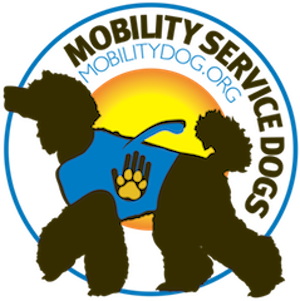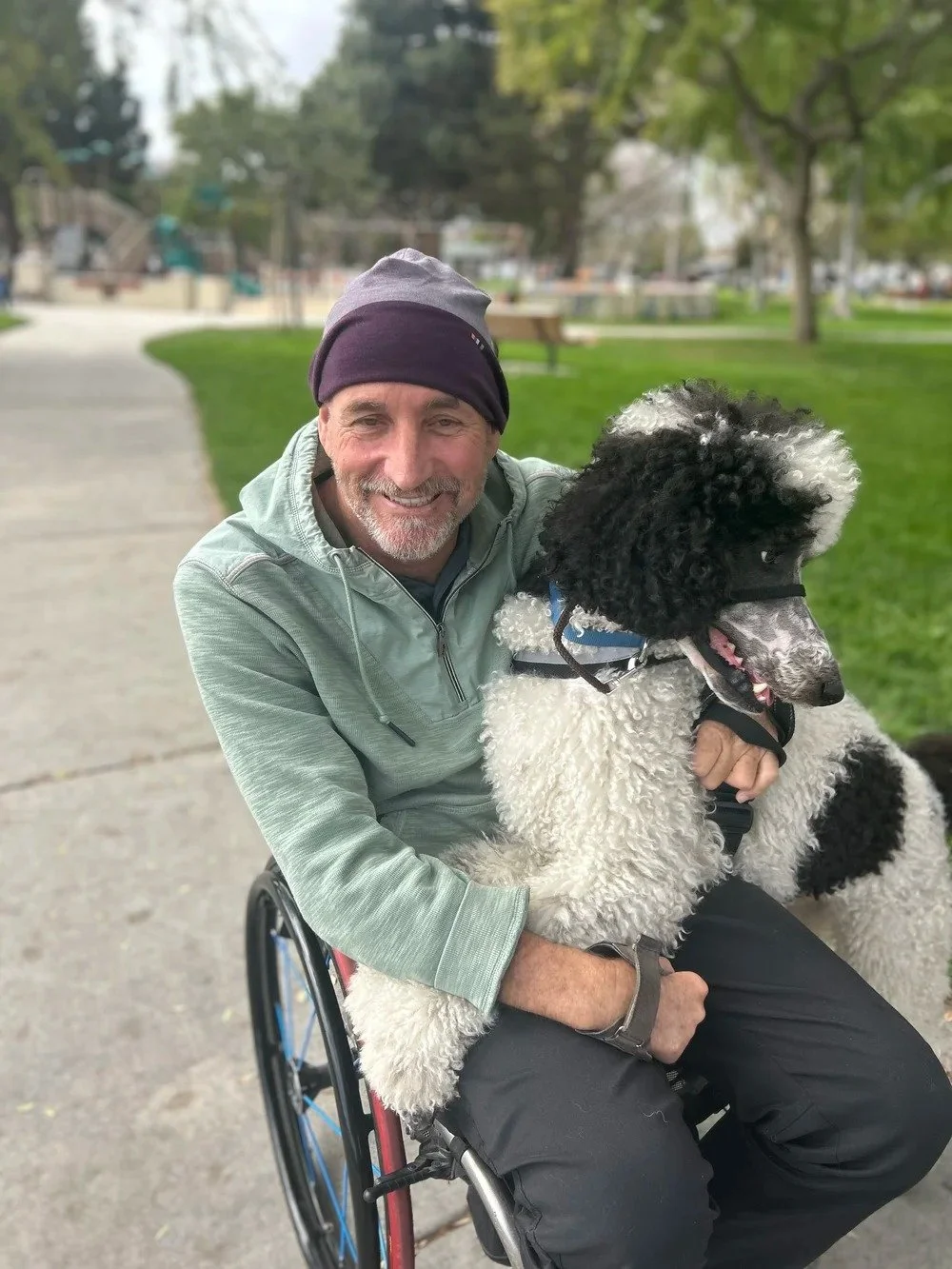Service Dogs Help Treat PTSD
Pushrim Foundation at A.R.F! Photo Courtesy MobilityDog
We know the many ways service dogs provide physical support to their handlers. Some examples: helping with balance and counterbalance; pulling a wheelchair; retrieving items; turning lights on and off; and (my favorite) taking clothes out of the dryer. However, the assistance handlers receive from their service dogs also includes help in dealing with cognitive and psychiatric challenges. Among these are posttraumatic stress disorder (PTSD).
PTSD is a mental health condition that can develop after a person has experienced or witnessed a traumatic event. PTSD symptoms can include reliving the stressful event (for instance, through flashbacks and nightmares), persistent negative thoughts and moods and hyperarousal in response to such stimuli as loud noises.
Anyone who has witnessed or lived through a traumatic episode may suffer from PTSD, but military veterans are especially vulnerable. In one 2009 study of veterans who had been treated at American health centers during the previous six years, researchers estimated that 40 percent of those who had seen action in Iraq and Afghanistan were diagnosed with PTSD, depression, or other mental health issues.*
How Service Dogs Help
Why are dogs so effective at assisting patients with emotional and psychiatric disorders? A simple and obvious fact: dogs aren’t humans. Most traumatic episodes that occur in combat are caused by the actions of people. Consequently, interactions with humans can trigger PTSD symptoms. Dogs, in contrast, are usually (and can be further trained to be) trustworthy, accepting and a source of security and safety. In other words, the perfect counter to human-caused PTSD stimuli.
Photo courtesy MobilityDog
Positive interaction with dogs offers a safe, effective and comparatively inexpensive way to increase the levels of stress-reducing neurochemicals. Chief among these is the neuropeptide oxytocin. Because it is associated with social bonding and positive emotion, oxytocin is sometimes referred to as the "love hormone" or "cuddle hormone." Oxytocin has been shown to modulate such PTSD symptoms as anxiety, fear responses, interpersonal difficulties, physical pain and sleep disturbances.
Decades-old research has shown that the human-dog interaction increases oxytocin in both people and pooches. Quiet play, including talking and petting, produces significant increases in oxytocin and other beneficial neurotransmitters and reduces the stress hormone cortisol. As little as 15 minutes of friendly and focused connection can have a discernible effect, including reduced stress and lower heart rate.
Service Dog Trainers Benefit Too
The benefits of service dog contact for those who suffer from PTSD are clear to anyone who feels the unconditional love of a dog. But here’s a surprise: in a program affiliated with Walter Reed Medical Center in Bethesda, Maryland, participants discovered that the trainers (not just the recipients) of service dogs also derived significant mental health benefits. The program, Warrior Canine Connection (WCC), pairs purpose-bred dogs (Golden Retrievers and Labrador Retrievers) with service member-trainers suffering from PTSD. Mastering the skills and patience required to train service dogs helps the WCC trainers with:
Increased patience, impulse control and emotional regulation
Decreased depression
Increase sense of purpose, belongingness and acceptance
Decreased startle response and reduced dependence on pain medications
Reduced stress and increased sense of calm.
Improved Skills as a Parent
An important byproduct of the WCC trainers’ experience was the perception of improved parenting. Anyone who has nurtured both children and dogs has experienced the parallel requirements: understanding, patience, consistency and positive reinforcement. As one WCC trainer said:
“The dog I am training bonded quickly with my daughter and me…Instead of being a strict father, she and the dog were getting praised for doing something right rather than being punished for something they did wrong. It brought to light a different parenting technique that she responded to better. The dog allowed us to connect in a very positive way. Working with the dog has taught me patience, which also carries over to being a parent.”**
Once again, service dogs prove to be super-canines, able to assist their human companions in an impressive array of ways. Just by being their affectionate, affiliative selves, they help us deal with some of the most profoundly damaging experiences a human can undergo. Thankfully, until we humans can find ways to cease inflicting trauma on our fellow homo sapiens, we can count on our canis lupus familiaris friends to come to our aid.
Yount, R.A., et al, “Service Dog Program for Treatment of Posttraumatic Stress in Service Members,” The United States Army Medical Department Journal, April-June 2012, pp. 63-68, http://www.cs.amedd.army.mil/amedd journal.aspx.
*See page 64 for reference to the study of Iraq and Afghanistan veterans.
**See pages 65 and 66 for the quote.


